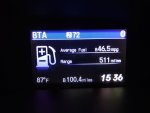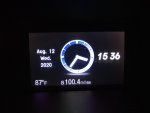Apparently so, or at least in my case. I filled up with QT 91 e0 in Gladstone Missouri. Current fill is Redline 5w30 too. The compression is high enough to maybe warrant it,but has ran most its life on non ethanol 87. Was kinda shocked but then again I have had numbers like this before. Anyone else have stories of similar findings?
Got over 46 mpg avg over 100 miles. Highest was mid 47's.
Got over 46 mpg avg over 100 miles. Highest was mid 47's.



